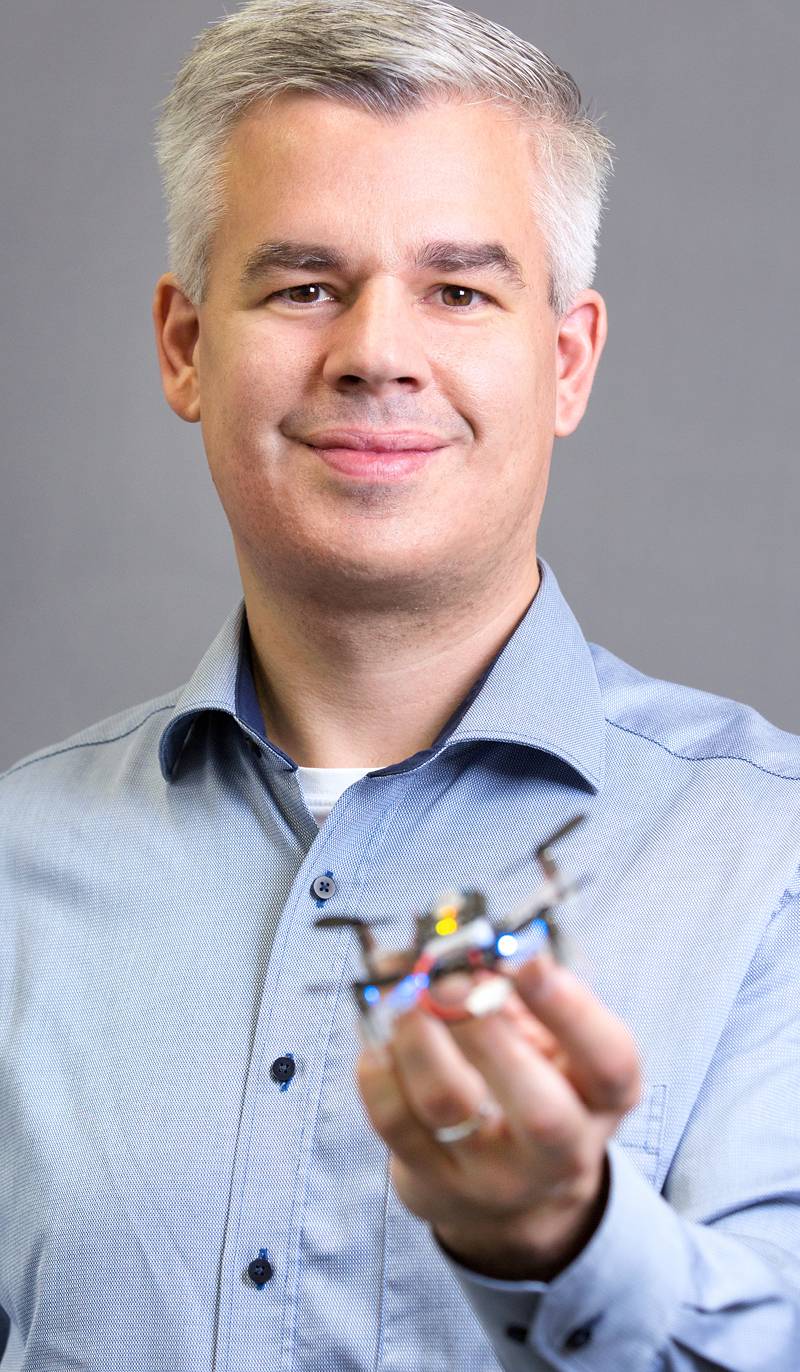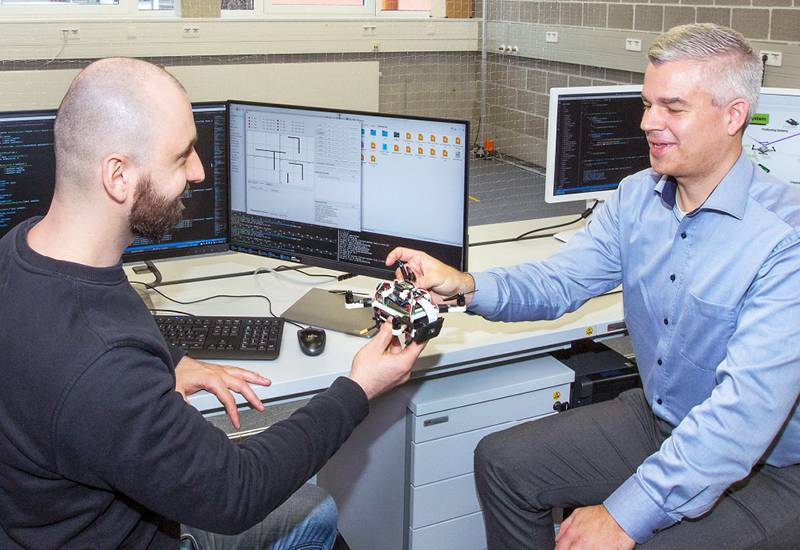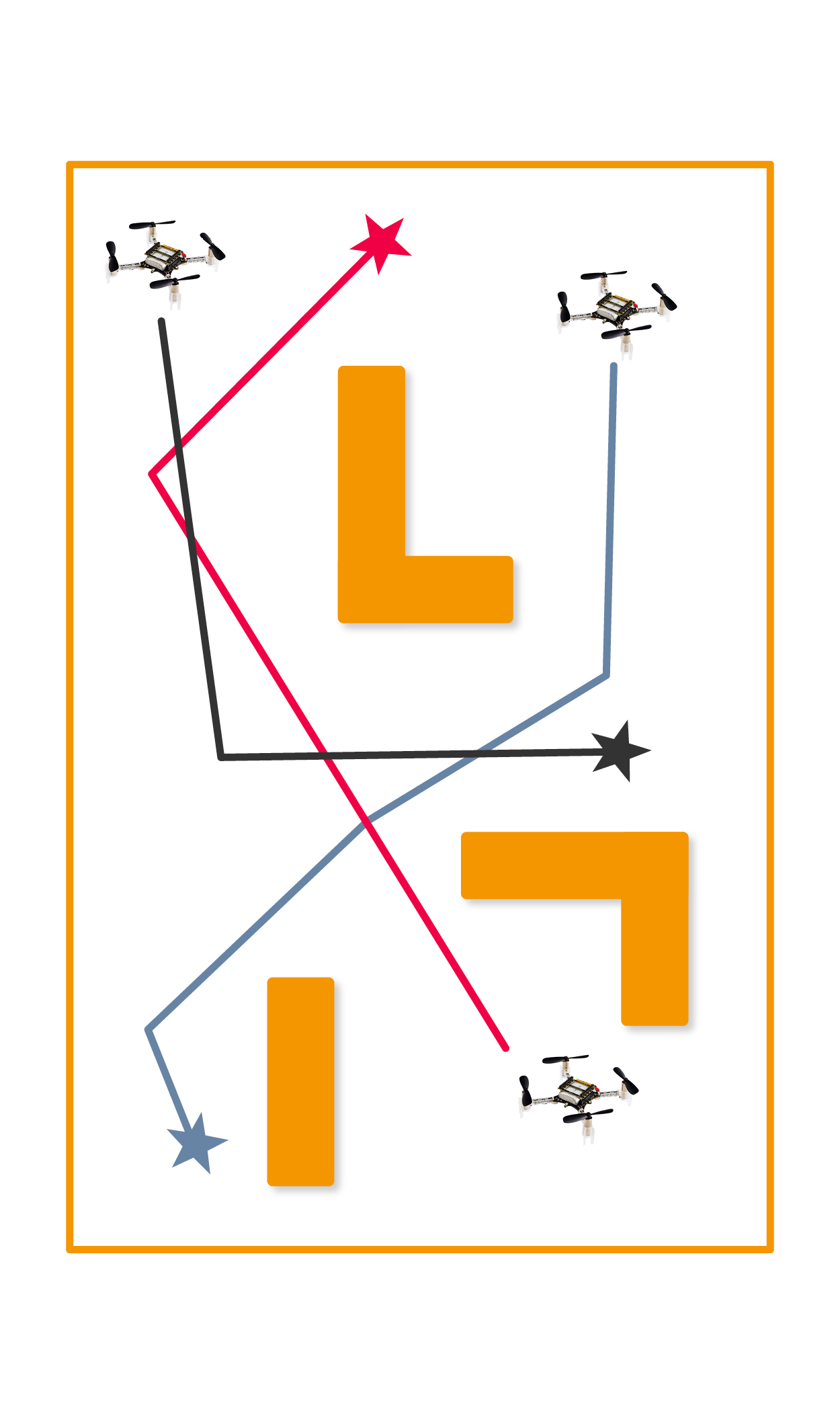
- Mechanical and Process Engineering
- Research
- Laboratories
- Overview and descriptions
- Current Research Projects
Cooperative Control Lab
Current Research Projects
At this point we would like to introduce the current projects. Unless otherwise stated, we implement the algorithms on the Crazyflie 2.0/2.1/Bolt platform.
(Cooperative) Navigation
Since navigation quality is a key-driver for multi-agent scenarios, we continuously seek for improvements in navigation quality. Since we aim to fly in obstructed environments, we rely on the UWB based LPS system as primary aiding sensor. However, the accuracy and path-following abilities are quite limited employing the factory supplied navigation filter, so we implemented an error-state unscented Kalman-Filter based data-fusion filter offering a 20% better estimation quality in terms of the RMSE estimation error (see Contributing to the Community section for further details).
Now, our next step is performing investigations, whether cooperative navigation could help to further enhance navigation quality. The LPS deck offers the possibility of performing inter-agent distance measurements relying on the time of arrival (ToA) measurements. The idea is using agents equipped with Lighthouse and LPS decks as additional anchor points for UWB measurements in order to improve the navigation quality of agents who work purely based on UWB signals. This way, an additional sensor connector becomes available for other tasks, such as exploration employing the Multi-Ranger deck.
The question which has to be answered is how this information has to be fused into the navigation filter adequately considering the cross-correlations introduced by the distance measurements while simultaneously accounting for the limited computational resources available on the Crazyflie MCU.
Decentralized Communication
The factory supplied communication framework is centralized and the Crazyradio PA USB dongle drives all communication and acts as the central node. Information among Crazyflies can be passed indirectly via the Crazyradio PA dongle, but this leads to a communication overhead and limits the exchangeable information and/or the number of agents. We refer to this kind of communication as pseudo-decentralized communication.
Therefore, in order to obtain a true decentralized communication scheme, direct message transfer between the Crazyflie agents without involving the Crazyradio PA dongle is desirable. To this end, we investigate token-passing strategies which guarantee network connectivity and also prevent message collisions.
Cooperative Path Planning
Cooperative path planning skills are a central building block for higher-level tasks to be solved in the agent team. To this end, our aim is enabling the agents to plan flight paths within a known map and in coordination with other agents in order to reach their destination on the best shortest path and without colliding with other.
In 2020, we implemented a Rapidly-Exploring Random Tree (RRT) based path planner, which is currently augmented to include the coordination of flight paths between several agents, for which a token-passing strategy is being pursued.
Future extension should be capable of coping with dynamically changing environments and incorporate map information gathered by cooperative exploration.
Cooperative Exploration
There are many tasks that require precise knowledge of the environment. The Multi-Ranger Deck allows the individual agent to measure distances to obstacles employing its four translational lidar sensors. Taking the own navigational state into account, the agent can create a map of its environment, which is used for path planning in the explored environment. However, since the battery capacity limits the flight time to ca. 7 minutes, it is very desirable to split the exploration task among several agents. To this end, the agents have to argue which areas are to be assigned to which agent. In addition, it has to be assured that despite the individually navigational errors, all agents agree on a consistent common map.
This task is made more difficult because the computational resources of the Crazyflies are very limited and state-of-the-art approaches like cooperative simultaneous localization and mapping (Cooperative SLAM) won’t be feasible on the onboard MCU.
The cooperative exploration project offers a variety of different extensions when the environment cannot be assumed to be static are non-cooperating agents move within the environment. Solving such tasks is likely to require computationally extensive algorithms.The so-called AI-deck based on Greenwaves GAP8 architecture and depicted in Fig. 10 was bought for implementing computationally intensive algorithms. We are currently familiarizing ourselves with the toolchain and trying to identify potential use cases.
Camera/ROS-Drone
Though being a very flexible platform with low security requirements, the Crazyflie 2.0/2.1 is limited regarding its flight duration, lift force and computational resources. Therefore, we designed a customized drone relying on the Crazyflie Bolt main circuit board which shares its main components (flight controller MCU, communication interfaces, on-board sensors) with the Crazyflie 2.0/2.1 such that the same controllers, navigation algorithms and communication protocols can be used. However, it offers the ability to connect more powerful motors and build a larger, customized drone. Making use of 3D printing and commercially available electronics, our drone can lift an additional electronics board of a Raspberry Pi form-factor. Our motivation is using the Asterics-Framework for hardware-accelerated image processing, developed by the Efficient Embedded Systems Group.This also allows the use of a Raspberry Pi 4 besides the STM32F405 MCU, so the Robot Operating System (ROS) and its libraries can be used for more computationally intensive algorithms. Once the Raspberry Pi is integrated, this will facilitate the implementation work, as programming the STM32F405 requires a significant amount of practice.
Talks and Presentations
In 2021 we presented our current project at the Bitcraze Awesome Meetup (BAM) days and we provide the YouTube recording underneath this section.

Contact
Prof. Dr.-Ing. Klaus Kefferpütz
Laborleitung
F 1.13
Phone: +49 821 5586-3165
[Bitte aktivieren Sie Javascript]
Contact for cooperation inquiries
Gabriele Schwarz
Leitung ITW
Phone: +49 821 5586-3320
[Bitte aktivieren Sie Javascript]
Homepage





